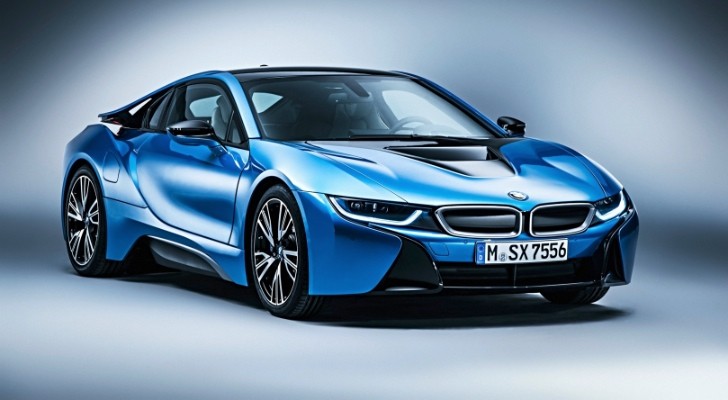Ever since the i8 came out the world seemingly started to pay more attention to hybridization in modern cars. It’s not like we weren’t interested before but looking at a Prius, for example, didn’t get you all hyped up like watching an i8 go by, right?
The same argument can be used comparing the i8 to today’s hypercars but then we fall into a different category. However, the BMW did bring along a more affordable solution compared to the aforementioned bonkers rides. Let us explain.
Hybrid powertrains have been known for a while now. There’s not much new here. They usually feature a petrol engine and an electric one that makes sure there’s no lack of torque at any time and that you can also drive in a pure electric mode without polluting. The problem was, they were usually implemented on classic cars that have mildly changed to support the new technology.
That was an intermediate solution, of course, until proper hybrids came out. Proper hybrids that are built to serve two purposes from the ground up, just like the i sub-brand cars are doing it right now.
The technology for such cars existed but there was a problem: the cost. You see, using carbon fiber and aluminum everywhere demands a hefty premium unless the technology needed to make them is cheap enough to run. That’s why BMW invested €2 million into its CFRP producing capabilities.
The solution is a compromise and the i8 is the one that does it best. Sure, looking at the specs, the McLaren P1, Porsche 918 Spyder and the Ferrari LaFerrari do look better but then you simply can't ignore the price tag.
Sure, the BMW is not cheap either at over $136,000 but its nothing compared to the other two we mentioned. At the same time, it uses a small internal-combustion engine and emits close to no CO2. That’s basically how performance cars will be like in the future.
We’re not talking hypercars here but rather sport cars that would replace the likes of the Porsche 911 and Audi R8 in the upcoming years. That’s the segment that more people can afford and that’s where big changes are expected. Henry Catchpole explains it quite well in the video below.
Hybrid powertrains have been known for a while now. There’s not much new here. They usually feature a petrol engine and an electric one that makes sure there’s no lack of torque at any time and that you can also drive in a pure electric mode without polluting. The problem was, they were usually implemented on classic cars that have mildly changed to support the new technology.
That was an intermediate solution, of course, until proper hybrids came out. Proper hybrids that are built to serve two purposes from the ground up, just like the i sub-brand cars are doing it right now.
The technology for such cars existed but there was a problem: the cost. You see, using carbon fiber and aluminum everywhere demands a hefty premium unless the technology needed to make them is cheap enough to run. That’s why BMW invested €2 million into its CFRP producing capabilities.
Introducing the more affordable CFRP
With the i8 and i3 we might be entering a new age in how we perceive cars. Even though fossil fuels are no longer recommended because we are actually poisoning ourselves with them, we don’t want to go full electric because we’ll miss the excitement of the engines, especially on sport cars.The solution is a compromise and the i8 is the one that does it best. Sure, looking at the specs, the McLaren P1, Porsche 918 Spyder and the Ferrari LaFerrari do look better but then you simply can't ignore the price tag.
Sure, the BMW is not cheap either at over $136,000 but its nothing compared to the other two we mentioned. At the same time, it uses a small internal-combustion engine and emits close to no CO2. That’s basically how performance cars will be like in the future.
We’re not talking hypercars here but rather sport cars that would replace the likes of the Porsche 911 and Audi R8 in the upcoming years. That’s the segment that more people can afford and that’s where big changes are expected. Henry Catchpole explains it quite well in the video below.

